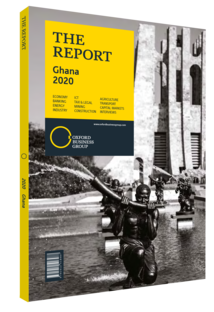Sulemanu Koney, CEO, Ghana Chamber of Mines: Interview

Interview: Sulemanu Koney
In what ways have sustainable mining practices evolved among small-scale mining operators?
SULEMANU KONEY: The government has taken the issue of small-scale mining quite seriously and has made significant progress in addressing environmental damage. Since the ban on small-scale mining, there has been a determined effort to identify harmful practices and find ways to address them. Between the banning of small-scale mining and the subsequent lifting of the ban, a detailed roadmap was developed. As a part of this process, 144 Nation Builders Corps graduates have been trained as drone pilots for the government’s GalamStop programme. They are now equipped to monitor various night activities and collect field data on illegal operations.
In addition, around 60 district committees on small-scale mining were created to help stakeholders oversee small-scale mining and eliminate illegal activities. In the past, reckless operations were not uncommon and caused damage to farmlands in particular. With reclamation practices and the requirement to rehabilitate damaged areas, we anticipate more sustainable and responsible operations. Typically, most of the destruction was caused by excavators, and tracking devices are expected to be installed on all of them in the country.
In addition, foreign small-scale mining is now illegal. With a sanction mechanism in place, there is a strong deterrent to illegal miners and a solid incentive for small-scale miners to develop long-term methods of conducting their operations sustainably.
What can be done to stimulate further greenfield activities, especially in the northern regions?
KONEY: One of the most important prerequisites for further large-scale exploration and mining operations in the northern regions is a more comprehensive survey of the entire country’s mineral potential. There are currently two mines at advanced stages of exploration, and a few more exploration projects in the pipeline. Further activity would greatly support widespread development of the regions.
The Ghana Chamber of Mines has expanded its reach beyond the typical mining districts, and is working with local and traditional political authorities to sensitise local populations. Mining investors are looking at both gold deposits and industrial mineral deposits in the northern belt. Potential for the latter is particularly exciting because of the opportunities it presents for deeper and broader integration with non-mineral segments of the economy.
How would you assess the ability of mining companies to further moderate expenses?
KONEY: Though the mining industry may be generally considered to be a late adopter in terms of diffusing the most up-to-date technology and innovation, these remain the best means of enhancing operational efficiency. There is a lot of room for improvement with regard to haulage of ore, which is a major cost driver. The cost of labour is particularly challenging to moderate. Some major input costs also remain high in Ghana, especially where prices are determined by the government. A notable example is diesel, which is heavily taxed, to such an extent that mining companies are cross-subsidising other users. As a result, the country is quite uncompetitive compared to its neighbours, even land-locked countries. However, the increase of gas in the energy mix is expected to bring down power costs and increase reliability.
When it comes to renewables, there will be more solar panels to complement pre-existing solutions, especially as the unit cost of solar continues to come down. The mining industry is keen to reduce its carbon footprint, and renewable energy will continue to become a critical part of its energy mix, especially as innovative technologies are driving down costs.
You have reached the limit of premium articles you can view for free.
Choose from the options below to purchase print or digital editions of our Reports. You can also purchase a website subscription giving you unlimited access to all of our Reports online for 12 months.
If you have already purchased this Report or have a website subscription, please login to continue.

